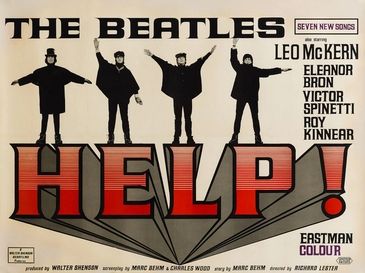Rediscovering iA Presenter: When the Mobile Version Changes Everything for Me
A few years ago, I experimented with new presentation tools and adopted iA Presenter. Since then, it’s been hit and miss. I’d start presentations as text using iA Presenter to organize my thoughts, but quickly switch to Google Slides or convert the text to talking points in a Google Doc—mainly because of their collaborative features.
A recent epiphany changed this approach entirely.
Two realizations transformed how I use the tool:
Testing and iteration became effortless. iA Presenter makes it incredibly easy to test-drive presentations and iterate in real-time, especially when in person. The focus is on the message, and not the design. The flow from idea to polished presentation feels natural, fast, and unforced.
The iPhone version unlocks unexpected value. Initially, I didn’t understand the use case. Are we supposed to huddle around an iPhone screen for presentations? I was missing the point entirely.

Last week, sitting on my couch with my iPhone, I started jotting down a few bullet points to discuss with the team. Within minutes, I’d transitioned to iA Presenter and created an entire presentation. The Unsplash integration made adding compelling visuals effortless. I test-drove the presentation by casting to my TV—all from my couch.
This shift from “presentation prep requires my laptop and desk” to “I can build presentations anywhere” fundamentally changed my relationship with the tool.
July 17, 2025
Drugs Hit Differently in the 60s
Last night, our friends hosted a Help-themed party. The host celebrated two-years helping at The Trevor project, a crisis line for LGBTQ+ youth. Her volunteer work is difficult and truly admirable.
There was also a Help-themed trivia quiz: Which movie was it: Help! Or The Help.
Finally, we watched the 1965 Beatles movie, Help! (86% at the Rotten Tomatoes Tomatometer)

WTF! It is a surreal wacky movie with odd transitions and some “interesting” British humor. I don’t know how well received the movie was in the 60s. The movie made me appreciate the Beatles a bit more, beyond this clean band, playing easy and poppy songs. It reminded me also a bit of strangeness of The Rolling Stones Rock and Roll Circus concert film (1986).
Drugs hit differently in the 60s.
July 6, 2025
Gentlemen, Start Your Engines
Fourth of July was yesterday. Local parades. Hot dogs and barbecue. Flags and lots of red, white, and blue. We spent time swimming in the Pacific Ocean in Santa Cruz and then watched fireworks at Shoreline Amphitheatre in Mountain View, accompanied by the San Francisco Symphony. Sun, beach, flags, and fireworks. Americana.
What’s also Americana are the most famous words in motorsports:
God bless our troops; God bless America; And Gentlemen, start your engines
Across the pond, the French today had their own version of those famous words:
Trois, deux, un, c’est parti!
Three, two, one, and they’re off! This is how the Tour de France commences. No engines to start. Just clip in and start pedaling.
It will be a glorious July with plenty of interesting races and evening show commentaries. I am ready:
- Vive le Velo show (Dutch) of Karl Van niewkerke, the premier cycling evening show with amazing guests, interviews, and
- Sporza Koers podcast (Dutch) Christophe Vandegoor and guests. Week 1, the co-commentator is Sven Nijs.
- The Move podcast (English) with Lance Armstrong, George Hincapie, and this year Bradley Wiggins.
- Vlammen podcast (Dutch) with Marijn de Vries and Linde Merckpoel.
This is perfect to watch or listen to, also while I am training for my own endurance races.
Who am I rooting for? Tadej, Remco, Wout, Philipsen, and most of all, lots of gutsy riding by all teams.
See you in Paris!
July 5, 2025
New Lingo and Terms
- ideation
- customer delight
- customer experience
- KTM: Know The Market
- GTM: Go To Market
June 21, 2025
Essential Software Engineering Lingo
I regularly share about new terms I learned. The following is the essential software engineering lingo I learned over the years:
- Wrapper
- Orthogonal
- Semantic
- Containerization
- Refactor
June 21, 2025
The Four Stages of Butt Butter
On long distance cycling events, especially on multi-day events like ALC, butt butter is essential.
Butt butter or chamois cream is an anti-chafing cream. Applied to the butt and groin area. It creates a barrier and reduces rubbing. They are often formulated with ingredients like shea butter, coconut oil, and other emollients to soothe and moisturize the skin. There are several variants: a US and European style cream, for him and her.
During ALC, there are boxes and boxes of little packets of butt butter, often in a small plastic glove for easy application.
We all go through various butt butter modesty stages:
- Apply in private, in a port-a potty.
- Apply turned away, and far from folks, near a wall or corner.
- Apply near my bicycle. There are people nearby.
- Apply in conversation, fully keeping eye contact with the person you are talking to. Congratulations, only now are you worthy of the ALC medal.
The hardest part is returning to the normal world and recalibrating modesty levels.
June 21, 2025
ALC2025
Overpacked For AIDS/Lifecycle 2025
After my ALC2023, I jotted down a few packing notes. They came in handy packing for this year’s ride.
The big lesson from ALC2025 is that I overpacked. My new rolling duffel bag was packed to the brim, and that excluded a large sleeping pad strapped to the top. Here are my lessons.
What Worked Out Well?
- A ticker and more comfortable sleeping pad was a good call, even it didn’t fit inside the bag. The ultra compact thin backpacking sleeping bad is great for backpacking but there is no need to suffer that much.
- The new full size micro fiber towel is better than the tiny towel I had before.
- The REI rolling duffle bag worked so much better than the large luggage.
- The new camping lantern worked out fantastically, as did the small LED mirror to put in my contacts.
- My battery packs worked great and I didn’t have to recharge and linger in the charging tent. Charging there is slow.
- I used the Licodaine patches a few nights.
Prepared for the Worst
I packed a number of items, just in case. I was lucky that I did not needed them. Keep these for the future.
- Several extra inner tubes, a bike repair kit with brakes, derailleur hangers, tools. (I did forget extra CO2 canisters).
- Cold or wet weather cycling gear.
Overpacked
- There is not need to bring both Crocks and sports shoes: leave the sport shoes home.
- Only bring a single down puffer jacket and leave the bulky warm hoodie at home. Keep the beanie.
- There is also no need for the several shirts for in the evening. I barely used them. One to sleep in and two to wear underneath your down jacket. As you use it barely a few hours every day, you can reuse it throughout the week.
- There is no need for an extra cycling kit if you are already have one for every day. In the worst case, I wash and reuse one.
- I packed too many wooden clothes pins and barely use a handful of them.
- I didn’t end up using the bulky medical tape.
To Consider for the Future
- A small foldable backpacking chair.
- A massage roller. A foldable foam roller is less critical, as there were plenty in front of the sport medicine tent.
- A small thermos to keep coffee warm overnight, so you can skip the coffee line and can jumpstart your mornings.
- An extra drawstring bag to carry things around camp.
While there is no other AIDS/Lifecyle, this list may be handy for other multi-day cycling trips in the future.
June 19, 2025
ALC2025
Hypocrisy
I am watching Rather, a documentary about Dan Rather and the importance of truth in news coverage and of clear language.
Fox News clearly and consistently fails that test.
On the other hand, and incomparable to Fox News, the New York Times isn’t all holy either. It tries to be too cute in their language, and in doing so, distort the truth.
For example, take a recent story in the NY Times
Record Debt Limit Increase Would Break Republican Precedent - A proposed $5 trillion debt limit increase could make it hard for Republicans to maintain their fiscal hawk credibility.
The “Breaking precedent” headline may barely register with many readers. Given the years of unison on not increasing the debt limit, and even shutting down the government over it, are more appropriate headline would be:
Hypocrite GOP lawmakers lose all fiscal credibility as they push for record $5 trillion debt increase.
June 19, 2025

Networking Magic
I recently attended a presentation by David Speigel on Networking Magic. I reread his notes and LinkedIn posts. Here are my action take-aways:
- Prioritize networking. Do it daily, with thick skin. Move on quickly, don’t dwell on it. It is a numbers game. Goal: 100 connections/number of years of work.
- Learn how to leverage LinkedIn better.
- (Re)Connect with past co-workers.
- Add everyone: Connect with folks you meet at work meetings, conferences, communities, and meetups.
- Connect with super-connectors (e.g., professors, recruiters, anyone who gets lots of looks, VCs).
- Search LinkedIn regularly: people you may know, more profiles for you, search using filters. Combine reach out with contactout.com.
- Build and bookmark LinkedIn’s Feed lists (how-to-connections; how-to-posts)
- Comment on posts!
- Learn how to craft reach out messages: find things in common, show research, add value, be curious. Keep it brief. Start the relationship with at best a minimal ask.
June 15, 2025
reading
That Was the Final AIDS/Lifecycle Ride
After 7 days pedaling from San Francisco, we arrived in Santa Monica, our final destination of the 2025 and final AIDS/Lifecycle: 563 miles (over 900km), 24500 ft, climbing (almost 7500m), and one pothole induced flat tire.
This has been an unforgettable experience, together with my beautiful and hard riding South Bay Blaze teammates, and with the many riders and roadies that make up this special social experiment, called the Love Bubble. The second time around has been more relaxed and more special. I will miss it!
This year, we raised over $17M for the ALC mission. In total, over the years, our little South Bay Blaze team raised $3M(!) and the AIDS/Lifecycle ride in total raised over $300M(!!!). It matters.
On day 3 of the ride, we stop for lunch in a little rural town of Bradley. Also here, ALC matters. This year, we brought together $119K for afterschool activities.
AIDS/Lifecycle brings out the best in people: compassion, empathy, speaking out on important issues, teamwork in the saddle and while repairing those flats, grit, and lots of smiles. Thank you all for a wonderful week!

June 7, 2025
ALC2025
cycling



